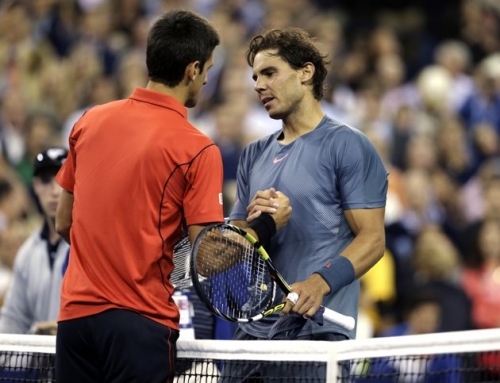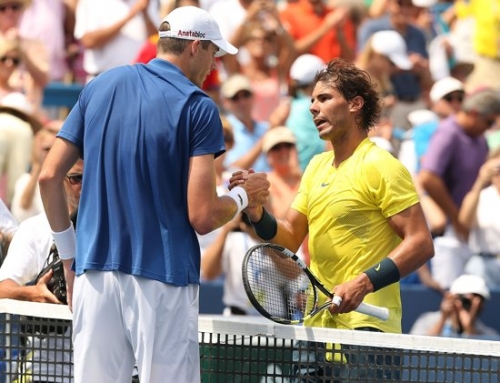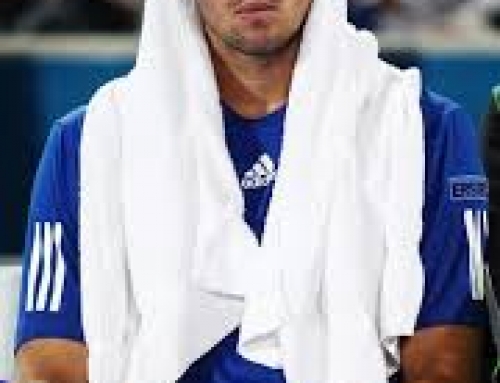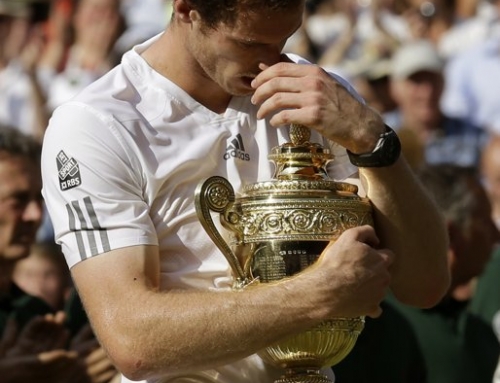 Roger Federer is a bit unusual when it comes to coaching. Technically, Federer has done without a coach for a while. He had had Jose Higueras on his team trying to find ways to beat Rafael Nadal, but parted ways when it didn’t seem to help his clay game that much. He then looked to Darren Cahill, but Cahill decided he didn’t want to coach Federer.
Roger Federer is a bit unusual when it comes to coaching. Technically, Federer has done without a coach for a while. He had had Jose Higueras on his team trying to find ways to beat Rafael Nadal, but parted ways when it didn’t seem to help his clay game that much. He then looked to Darren Cahill, but Cahill decided he didn’t want to coach Federer.
So Roger did without. Sort of. He’s worked with Severin Luthi, the Swiss Davis Cup captain, who often travels with Federer, but is never openly acknowledged as his coach.
Roger is now planning to work with Paul Annacone. Annacone coached Pete Sampras after Tim Gullikson passed away from cancer. Annacone played during the McEnroe era and was a serve-and-volleyer. Indeed, he pushed the notion of serve and volley so much that he would come to net as much as he could, even against another serve and volleyer. It was unusual to see Annacone rush the net on return of serve against McEnroe. It was an innovative idea, but ultimately didn’t pan out so well.
Annacone played college tennis at the University of Tennessee although, as with most college tennis, he was not a native of Tennessee (I believe he’s originally from New York). During this time, he becamse NCAA champ.
After coaching Sampras, Annacone became head of coaching for the Lawn Tennis Association in Britain hoping to revive some semblance of good British tennis, at least someone decent after Andy Murray. Britain would love it if they were Switzerland which is neither Spain nor France, but boasts Stanislas Wawrinka and Marco Chiudinelli. That doesn’t sound like much, but it’s much better than what Britain offers.
Annacone was let go earlier this year, which meant he was available for other jobs, and it seems Federer, the top man in Slam wins, now wants advice from the coach of the second man in Slam wins.
It’s not clear what Annacone will advise Federer to do. Clearly, Annacone’s strengths are in serve and volley. By the end of Sampras’s career, he was serving and volleying almost all the time. However, Sampras had the benefit of having a serve that bailed him out of trouble. Federer has a pretty good serve, but he’s one of those top players that doesn’t ace himself out of trouble. Imagine if Sampras, at his prime, missed a great deal of his first serves on break points and was forced to hit second serves. Sampras would probably not be the 14 time Slam champion. It says something about Federer that he managed to win as much as he did, especially in recent years, without hitting huge serves on the big points (which isn’t to say he didn’t hit a few, just that he didn’t hit it reliably at the big points).
Like many top players, Federer seems like a stubborn player. In this day and age, Rafael Nadal is unusual. He appears to be the rare player that listens to what his coach tells him to do. Of course, this puts tremendous pressure on Uncle Toni to mold Rafa’s game into something positive rather than steer him to doing something that Rafa can’t manage. More typical is a player like Boris Becker who sometimes wanted to beat a player in a certain way (say, hitting groundstrokes) rather than use his strength (serving and volleying).
There has been clamoring, especially from old timers, for Federer to bring serve and volley back to tennis. They figure, if he’s the greatest, he can still win playing serve and volley. Indeed, Federer used to serve and volley, especially on grass. Federer used to be fearful of players like Lleyton Hewitt and David Nalbandian, whose ground game he felt superior to his own. It’s a credit to Federer that he built up his ground game so he could compete with them. Despite being his contemporaries, both Hewitt and Nalbandian have struggled as they close in on 30 years of age.
About the only top player that I’ve seen rely on serve and volley is Michael Llodra. It’s no surprise that he’s 30 years old and grew up during the Sampras era where serve and volley was still viable. Sampras, Henman, and Rafter continued the tradition of top players that rushed the net. But, but 2003 or so, when Federer began dominating the sport, the serve and volleyers disappeared. The groundstrokers of today have become excellent passers. But without someone highly ranked to serve and volley, how do we know how effective it is.
Another reason serve and volley has become rarer than one-handed backhands is because the style of play has some risk. Ground play leaves the ball in a somewhat predictable manner and players adjust to the height and speed of the ball. When one rushes the net, there is more risk. If the approach is poor, or the serve is poor, a good returner or passer will dip that ball down low, and a volleyer will struggle with that shot. Indeed, a volleyer needs to handle angled passing shots, lobs, hard hit shots directed at them. The variety of shots they need to handle is tremendous and any little mistake means a volley sent out wide or into the net. I believe this is one reason serve and volley has become more problematic for many players.
Given the quality of passing, the variability of the ball that you might encounter at net, players have become reluctant to go to net, especially off the serve. In doubles, it’s still effective because the net man prevents a returner from standing 12 feet behind the baseline where the best returners like to return. They have to stand in closer to the baseline, but they are also at risk of being aced more often as a consequence.
Is Federer looking to bring serve and volley back to his game? Is he willing to make the biggest change since he decided he wanted to be a baseliner? Or will Annacone merely bring subtle changes to Federer’s game because Federer believes that all he needs is a bit of tweaking in his game?
Federer returns back to play in Toronto, so that will be the first time we get to see if Federer has made any significant changes to his game.




![[US Open Men’s Final] Can Djokovic beat Nadal in the finals?](https://www.essentialtennis.com/wp-content/uploads/2013/09/20130909djokovic-500x383.jpg)


